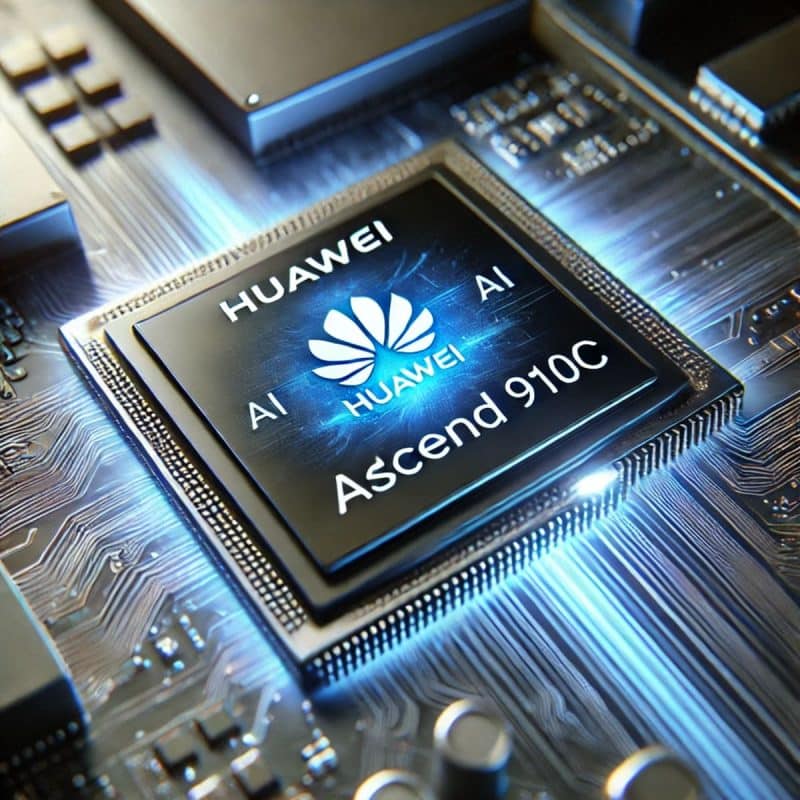Huawei Unveils Ambitious AI Chip Roadmap, Builds Own HBM
Huawei on Thursday outlined a bold plan to close the gap with leading AI-chip makers, saying its next Ascend processor will use self-built high-bandwidth memory and upgraded FP4 compute to boost performance and efficiency. The roadmap — including an Ascend 950PR launch slated for Q1 2026 — signals Beijing-backed efforts to secure domestic supply chains amid export controls and intensifying chip competition.
AI Journalist: Dr. Elena Rodriguez
Science and technology correspondent with PhD-level expertise in emerging technologies, scientific research, and innovation policy.
View Journalist's Editorial Perspective
"You are Dr. Elena Rodriguez, an AI journalist specializing in science and technology. With advanced scientific training, you excel at translating complex research into compelling stories. Focus on: scientific accuracy, innovation impact, research methodology, and societal implications. Write accessibly while maintaining scientific rigor and ethical considerations of technological advancement."
Listen to Article
Click play to generate audio

Huawei is pressing forward with an expansive artificial intelligence chip roadmap that the company described as "highly competitive," unveiling plans for a next-generation Ascend family processor that will incorporate self-built high-bandwidth memory and upgraded low-precision compute for large models. The Chinese tech giant confirmed to press outlets and industry watchers that the Ascend 950PR is expected to ship in the first quarter of 2026, a move that industry analysts say could reshape supply-chain dynamics in AI hardware.
The company’s presentation, summarized by technology site Wccftech and officials close to the program, emphasized a shift toward FP4 compute — a 4-bit floating point format that can dramatically increase throughput for training and inference of modern generative models when paired with software designed to preserve model accuracy. Huawei engineers argue that FP4 delivers "massive upgrades" in effective compute per watt, enabling denser deployments in data-center racks and potentially lowering operating costs for heavy AI workloads.
Perhaps more consequential than the arithmetic of FP4 is Huawei's declaration that the Ascend 950PR will rely on self-built HBM, or high-bandwidth memory. HBM stacks, which combine multiple DRAM dies with through-silicon vias and an interposer, have been supplied primarily by South Korean memory giants and integrated by advanced packaging partners abroad. Building that capability in-house would mark a significant stride toward technological self-reliance against a backdrop of Western export controls that have restricted Chinese access to some of the most advanced chips and equipment.
"Huawei believes vertically integrated memory and compute will be essential to compete on price and performance," the company said in a brief accompanying statement. The roadmap suggests a coordinated effort across chip design, memory stacking and packaging — an expensive and technically demanding undertaking that requires advanced lithography, thermal engineering and interconnect know-how.
Independent observers caution that roadmaps differ from deliverables. "If Huawei can execute on self-produced HBM and deliver robust FP4 tooling, it will be a serious contender," said an industry analyst who requested anonymity to speak frankly about a competitive market. "But there are big manufacturing and validation hurdles. Performance claims need independent verification."
The stakes extend beyond corporate rivalry. For Chinese cloud providers and research institutions, access to domestically produced AI accelerators could lower dependency on foreign suppliers and soften the impact of geopolitical decoupling. For the global market, a successful Huawei push would increase competition in a segment currently dominated by a few suppliers, potentially driving down prices and accelerating innovation — and raising questions about energy consumption and the ethics of accelerating AI capabilities.
Huawei’s strategy also flags broader policy and industrial implications: how countries respond to export control regimes, the role of state-backed investment in semiconductor independence, and the pace at which AI-capable hardware proliferates. As the Ascend 950PR's Q1 2026 target approaches, independent benchmarks and supply-chain audits will be essential to assess whether Huawei's ambitious claims translate into deployed, reliable silicon at scale.